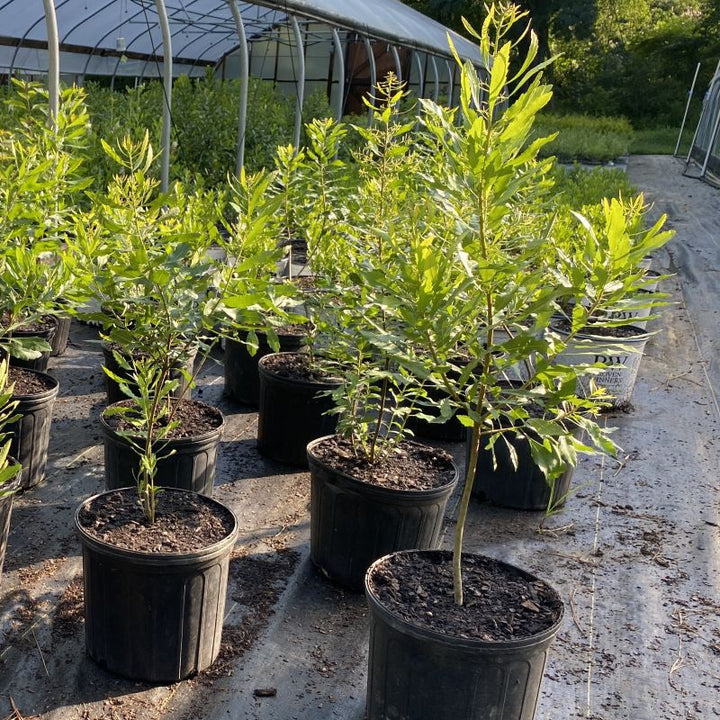Myrica (Morella) cerifera (Southern Wax Myrtle)
- Low stock - 4 items left
- Inventory on the way
Myrica cerifera, commonly known as southern wax myrtle and known by the other scientific moniker Morella cerifera, is a large, broad-leaved evergreen shrub with aromatic leaves, closely related to dwarf wax myrtle, Myrica pusila; the two plants are so closely related that there is some debate whether southern wax myrtle is actually a separate species from Myrica pusila, or if it is just a naturally dwarfed cultivar. Growing to a maximum height of 25-35' tall and 8-10' wide, though typically much smaller, Myrica cerifera is an extremely hardy shrub once established, and can be found in a wide range of habitats thanks to its tolerance of heat, drought, salt, and poorly-draining wet soils. Myrica cerifera is not, however, very tolerant of cold temperatures, and foliage will look best in mild winters; cold, windy winters can cause the plant to defoliate.
Southern wax myrtle blooms in early to late spring, depending on climate, and produces small, inconspicuous yellow-green flowers, which eventually turn to the blue-gray berries that give Myrica cerifera its other common name of waxberry. Waxberries are an excellent food source for a variety of birds, with their waxy coating protecting them from water and heat damage. Southern wax myrtle also has a larger growth habit than dwarf wax myrtle, which allows for a variety of birds to nest and perch among its branches. With a variety of ecological appeal and a lot of versatility in the landscape, waxy myrtle is an excellent addition to almost any landscape.
Notes: Myrica cerifera is dioecious, meaning that there are male and female plants; males and females must be planted together to produce the best fruiting results.








